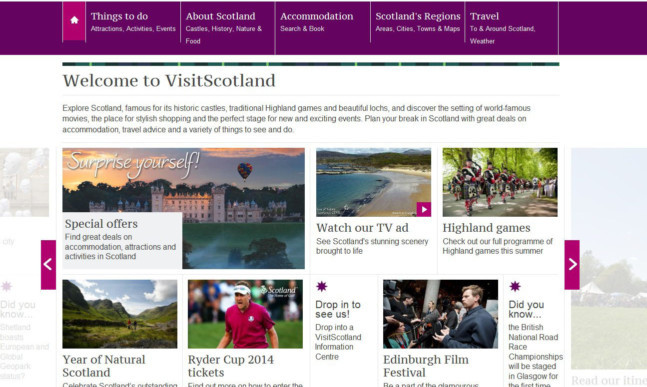Accusations of political bias made against tourist site VisitScotland have been branded “spurious” and “ridiculous” by Scotland’s Tourism Minister.
Fergus Ewing was responding after the issue over the agency’s controversial historical timeline was raised at Holyrood by Labour MSP Patricia Ferguson.
The site, pictured right, had been criticised for being biased towards the SNP, with an early version of the site not mentioning the Second World War but including the election of the first ever Nationalist MP.
Speaking after the matter was raised at Holyrood, Mr Ewing said: “I have rarely heard a more spurious and ridiculous accusation than the one that I have heard this afternoon and seen in publicity that was drawn to my attention today.
“I say that because the purpose of VisitScotland is to provide information about significant dates, events and matters of interest in Scotland.”
He added: “The idea that merely displaying factual information on a website is somehow party political is ludicrous.”
However, Ms Ferguson said she was “astounded” by Mr Ewing’s response to her query and branded the timeline “partisan promotion”.
She added: “I ask the minister to reflect, in his calmer moments, on the content of the VisitScotland website and consider whether the evidence is that those issues are ones that would attract people to visit Scotland which is, after all, what it purports to do.
“I also ask the Scottish Government to provide, as a matter of urgency, guidance to public bodies to ensure that this partisan promotion it can be nothing else does not occur elsewhere in public bodies that promote Scotland.”
A VisitScotland spokesperson said: “The content of the timeline was created using research from various external sources.
“Some key points in Scottish history are within the timeline and include reference to political landmarks from the formation of the Labour Party in 1888 to the first SNP MP in 1945.
“It is designed to give a taste of Scottish history and is by no means exhaustive. The very nature of digital media allows us to be flexible and we are happy to add in Patricia Ferguson’s suggestions.”
